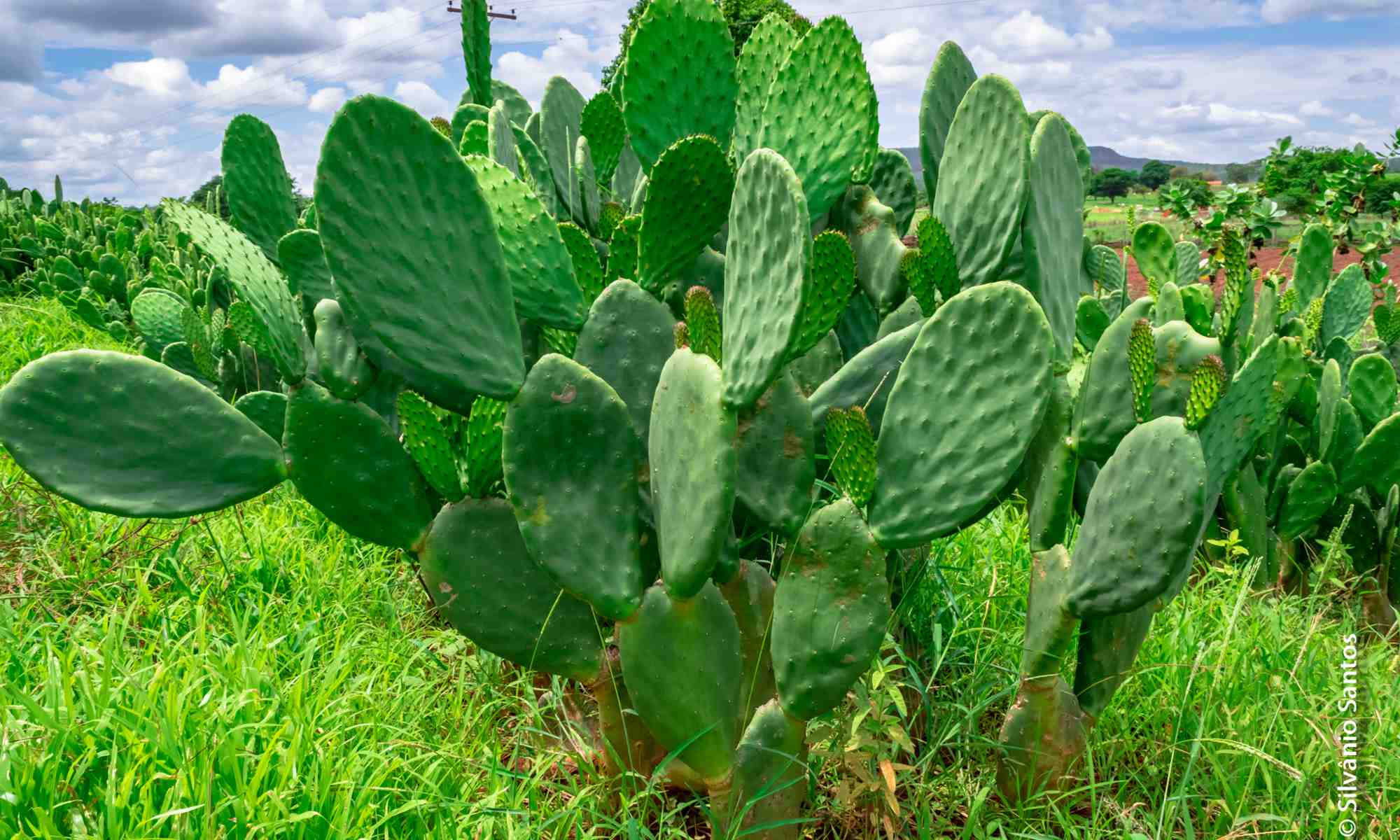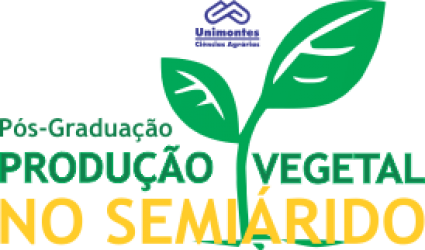- Version
- Download 16
- Tamanho do Arquivo 788.02 KB
- Data de Criação 16/06/2021
- Download
PINTO, Deyvisson Rodrigues. Seleção precoce de sorgo para tolerância à seca e sua correlação com o desempenho agronômico. 2020. 52 p. Dissertação (Mestrado em Produção Vegetal no Semiárido) – Universidade Estadual de Montes Claros, Janaúba, 2020.
Objetivou-se com este trabalho, avaliar a eficiência da fenotipagem precoce em tubetes na seleção de híbridos, assim como a correlação com o desempenho agronômico dos mesmos híbridos no campo, em ambientes com e sem restrição hídrica no pós-florescimento. Foram avaliados 26 híbridos de sorgo granífero, em estudo constituído de duas etapas. Na primeira etapa, o ensaio foi conduzido em casa de vegetação, onde os genótipos foram cultivados em tubetes. Foram utilizados tubetes de 6,3 x 19 cm, preenchidos com Latossolo Vermelho distrófico típico. Foram semeadas três sementes por tubete, deixando somente uma plântula em cada tubete após a germinação, irrigado cada uma diariamente com 50 mL de água, com auxílio de uma proveta. Onze dias após a semeadura suspendeu-se a irrigação apenas no ensaio com restrição hídrica. Nove dias após o início da restrição, momento em que as plântulas começaram a apresentar sintomas de déficit hídrico, como amarelecimento e enrolamento das folhas, foi realizado o corte da parte aérea à altura do colo da plântula e a separação do sistema radicular, para avaliação das características: comprimento de raízes (cm), área de superfície de raízes (cm2), diâmetro médio de raízes (mm), volume de raízes (cm3), área da superfície de raízes muito finas (de 0-1 mm de diâmetro) (cm²), além da razão massa seca da raiz / massa seca parte aérea. Na segunda etapa, foram conduzidos dois ensaios de campo, um com e outro sem restrição hídrica no pós-florescimento. No ensaio com restrição hídrica, a irrigação foi suspensa aos 48 dias após a semeadura, período em que a maioria dos híbridos se encontrava no estádio de emborrachamento. Já nos ensaios sem a restrição, a irrigação foi realizada até a maturação fisiológica dos grãos. Em ambos os ensaios foi utilizado sistema de irrigação por aspersão convencional e não houve ocorrência de chuvas durante o período experimental. Foram avaliadas as características: florescimento, altura de plantas, teor relativo de clorofila total e produtividade de grãos. Os dados obtidos foram submetidos a análises de variância individuais e conjunta, envolvendo os ensaios com e sem restrição hídrica. Posteriormente, os híbridos foram comparados pelo teste de Scott-Knott (p<0,05) e os ambientes pelo teste F. No ambiente com restrição em tubetes, os híbridos com os melhores desempenhos para a maioria das características avaliadas foram: BRS310, 1516057, 1719034, 1719026, 1716041, 1G282, 1516059, 1720052, 1716049, 1718036 e 1716045 e as características volume de raiz, área de superfície de raiz, área da superfície de raízes muito finas e massa seca de parte aérea e de raiz apresentaram maior contribuição na seleção desses híbridos. Já no ensaio em condições de campo, os híbridos 1716049, DKB540, 1718028, 1720052, 1720029, 1719036, 1716011, 1719029, 1716045, BRS310, 1719026, 1718036, 1G282, 1716041 e 1719052 apresentaram melhor desempenho em produtividade de grãos, com florescimento variando de médio a precoce e alturas dentro da faixa desejável. A seleção precoce em casa de vegetação mostrou-se capaz de identificar híbridos superiores em condições de campo, com a avaliação das características área total da superfície de raiz e área da superfície de raízes muito finas e pode ser usada no melhoramento populacional, possibilitando a fenotipagem de elevado número de progênies de forma rápida, descartando aquelas com características não desejáveis, de forma a reduzir o número a levar para teste de campo.
Palavras-chave: Sorghum bicolor, estresse hídrico, produtividade de grãos, correlação, morfologia radicular.
Early selection of sorghum for drought tolerance and its correlation with agronomic performance
The objective of this work was to evaluate the efficiency of early phenotyping in tubes in the selection of hybrids, as well as the correlation with the agronomic performance of the same hybrids in field conditions in environments with and without water restriction in postflowering. We evaluated 26 grain sorghum hybrids in a study consisting of two stages. In the first, the assay was conducted in a greenhouse, where the genotypes were grown in 6.3 x 19 cm tubes filled with typical dystrophic Red Latosol. We sowed three seeds per tube, leaving only one seedling in each tube after germination, each irrigated daily with 50 mL of water, with the aid of a beaker. Eleven days after sowing, irrigation was suspended only in the experiment with water restriction. Nine days after the beginning of the restriction, when the seedlings began to show symptoms of water deficit, such as yellowing and leaf curl, the shoots were cut at soil level and the roots were separated, to analyze the root system. We evaluated root length (cm), root surface area (cm2), average root diameter (mm), root volume (cm3), surface area of very thin roots (0-1 mm diameter) (cm²), as well as root / shoot dry mass ratio. In the second stage, two field trials were conducted, one with and one without post-flowering water restriction. In the water restricted test, irrigation was suspended 48 days after sowing, a period in which most hybrids were in the boot stage. In trials without restriction, irrigation was carried out until the physiological maturation of the grains. In both tests, a conventional sprinkler irrigation system was used and there was no rainfall during the experimental period. The evaluated characteristics were flowering, plant height, relative content of total chlorophyll and grain yield. The data obtained were submitted to individual and joint analyzes of variance, involving the tests with and without water restriction. Subsequently, the hybrids were compared by the Scott-Knott test (p <0.05) and the environments by the F test. In the environment with tubes in which there was water restriction, the hybrids with the best performances for most of the evaluated characteristics were BRS310, 1516057, 1719034, 1719026, 1716041, 1G282, 1516059, 1720052, 1716049, 1718036 and 1716045 and the characteristics root volume, root surface area, surface area of very thin roots and dry masses of shoots and roots presented higher contribution in the selection of these hybrids. In the field experiment, hybrids 1716049, DKB540, 1718028, 1720052, 1720029, 1719036, 1716011, 1719029, 1716045, BRS310, 1719026, 1718036, 1G282, 1716041 and 1719052 showed better performance in grain yield, with flowering varying from medium to early and heights within the desirable range. Early selection in a greenhouse proved to be able to identify superior hybrids in field conditions, with the evaluation of the characteristics total root surface area and surface area of very thin roots, and can be used in population improvement, enabling quick phenotyping of a high number of progenies, discarding those with undesirable characteristics, in order to reduce the number of plants to be taken for field testing.
Keywords: Sorghum bicolor, water stress, grain yield, correlation, root morphology.

